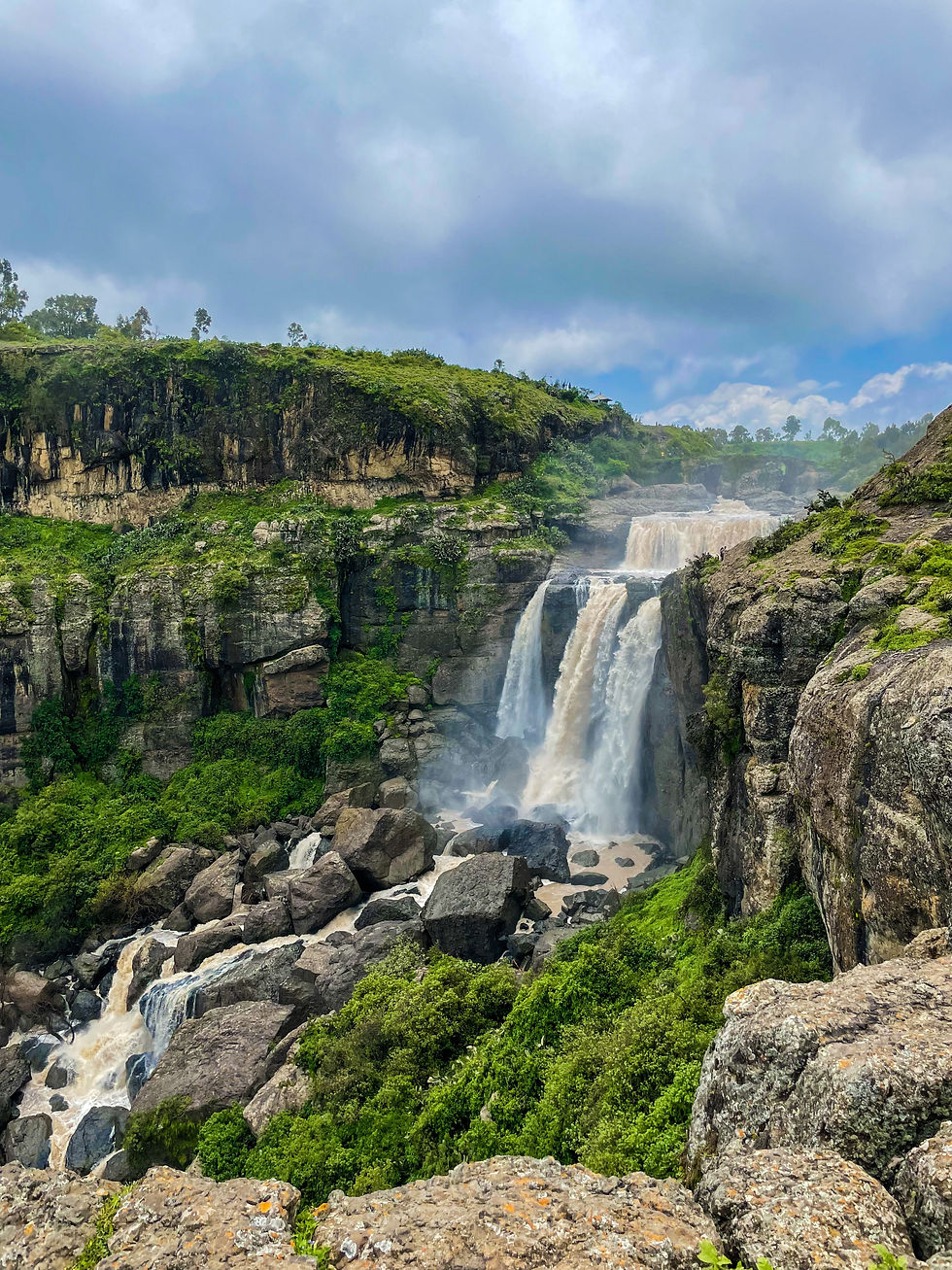Land of Punt: Pre-Bronze Age Kingdom of Riches
- Sylvia Rose

- Dec 8, 2023
- 5 min read
Updated: Jan 11, 2024
The Kingdom of Punt is ancient when the ancient Egyptians are young. Several expeditions have been recorded by the Egyptians although the exact location of the lands are (perhaps purposefully) unclear. It's said to center around the Horn of Africa.
See also:
The pre-historic Egyptian god Bes is believed to come from Punt. Trade exports from the kingdom include resins such as frankincense and myrrh, as well as gold, ebony, ivory and wild animals.
The first Egyptian expedition to Punt is led by Pharaoh Sahure of the Fifth Dynasty (25th century BC), returning with cargoes of antyue (resins) and Puntites. They also brought blackwood, or African purple hardwood, coveted for making musical instruments.
See also:
Gold from Punt is recorded in Egypt even earlier, during the reign of Pharaoh Khufu (2609 - 2584 BCE) of the Fourth Dynasty. Khufu's is the largest pyramid at Giza. Expeditions continue sporadically until the 18th Dynasry (1550 - 1292 BCE).
Above:
Landscape of Punt with houses on stilts, two fruiting date palms, three myrrh trees, a sunbird (Cinnyris metallica), cow, unidentified fish and a turtle. Water in the original was green to show it's salt or tidal.
This is a (very small) drawing from the walls of the mortuary temple of Pharoah Queen Hatshepsut at Deir el-Bahri. It shows part of a royal expedition to Punt.
See also:
During the reign of Mentuhotep III (11th dynasty, ca. 2000 BC), several voyages are undertaken. Trading missions of the 12th dynasty pharaohs Senusret I, Amenemhat II and Amenemhat IV are also successful in reaching the mysterious land of Punt.
Hatshepsut - the Pharoah Queen (c. 1507–1458 BCE)
In the Eighteenth Dynasty, Hatshepsut builds a Red Sea fleet with the purpose of expaditing trade between the head of the Gulf of Aqaba. She wants to extend the network as far as Punt to bring mortuary goods to Karnak in middle Egypt in exchange for Nubian gold.
See also:
When Hatshepsut undertakes the Egyptian-Punt expedition, the best known in history, she brings artists, scholars and scribes. They record much about the royals of the kingdom, inhabitants, houses and trees on the island.
They present Punt as the Land of the Gods, a faraway region in the direction of the sunrise, blessed with products for religious purposes. Traders return with gold, ivory, ebony, incense, aromatic resins, animal skins, short-horned cattle, wild animals, eye-makeup cosmetics, fragrant woods and spices such as cinnamon.
See also:
During the reign of Queen Hatshepsut, trade networks solidify and expand. Ships cross the Red Sea regularly for trade in bitumen, copper, carved amulets, naptha for lamps, and other goods.
Trade items are taken overland, down the Dead Sea to Elat at the head of the gulf of Aqaba. There, they're joined with frankincense and myrrh coming north. Trade goods come by sea and overland along mountainous routes going north, to follow the east coast of the Red Sea.
See also:
The voyage of Queen Hatshepsut is legend. It was a journey of trade but the motif in her funerary chambers is one of dominance and war, with her chancellor Nisha in charge.
The reign of the Pharoah Queen, who is bold enough to wear the false beard of the Pharoah for her statues, is one of peace and expansion. She's considered one of the greatest Pharoahs in history.
See also:
Ruled by King Parahu and Queen Ati, the Puntites are delighted to see increased trade and profit. They trade not only local goods but those of other cultural groups as well.
For one journey Hatshepsut receives a blessing of the god Amun:
Said by Amen, the Lord of the Thrones of the Two Land: "Come, come in peace my daughter, the graceful, who art in my heart, King Maatkare [i.e. Hatshepsut]... I will give thee Punt, the whole of it... I will lead your soldiers by land and by water, on mysterious shores, which join the harbours of incense... They will take incense as much as they like.
They will load their ships to the satisfaction of their hearts with trees of green [i.e., fresh] incense, and all the good things of the land."
See also:
The Greatest of all Pharaohs dies at age 50. Several years after her death, attempts were made to eradicate her image from memorial statues, reliefs, paintings, texts and other records of history.
No one's quite sure why. Although it seems at first a hate act, as some vandalism includes chopping off her Pharaoh's false beard, there are other such recorded events for male rulers for religious or political reasons.
See also:
Hatshepsut's mortuary complex at Deir el-Bahri shows a row of Puntites with red skin and facial features similar to Egyptians. Their hair is long or bobbed, they have goatees and wear kilts.
Trade continues for many years. From a 12th century account at the time of Ramesses III, detailing the return of an expedition:
"They arrived safely at the desert-country of Coptos: they moored in peace, carrying the goods they had brought. [The goods] were loaded, in travelling overland, upon asses and upon men, being reloaded into vessels at the harbour of Coptos. [The goods and the Puntites] were sent forward downstream, arriving in festivity, bringing tribute into the royal presence."
See also:
Toward the end of the New Kingdom, 11th century BCE, the Land of Punt is woven into tales of intrigue, mystery and fantasy. The Egyptians call Punt the Land of the Gods, in particular the Sun God. Some contemporary accounts see Punt as the ancestral homeland of the tribes of Egypt.
See also:













